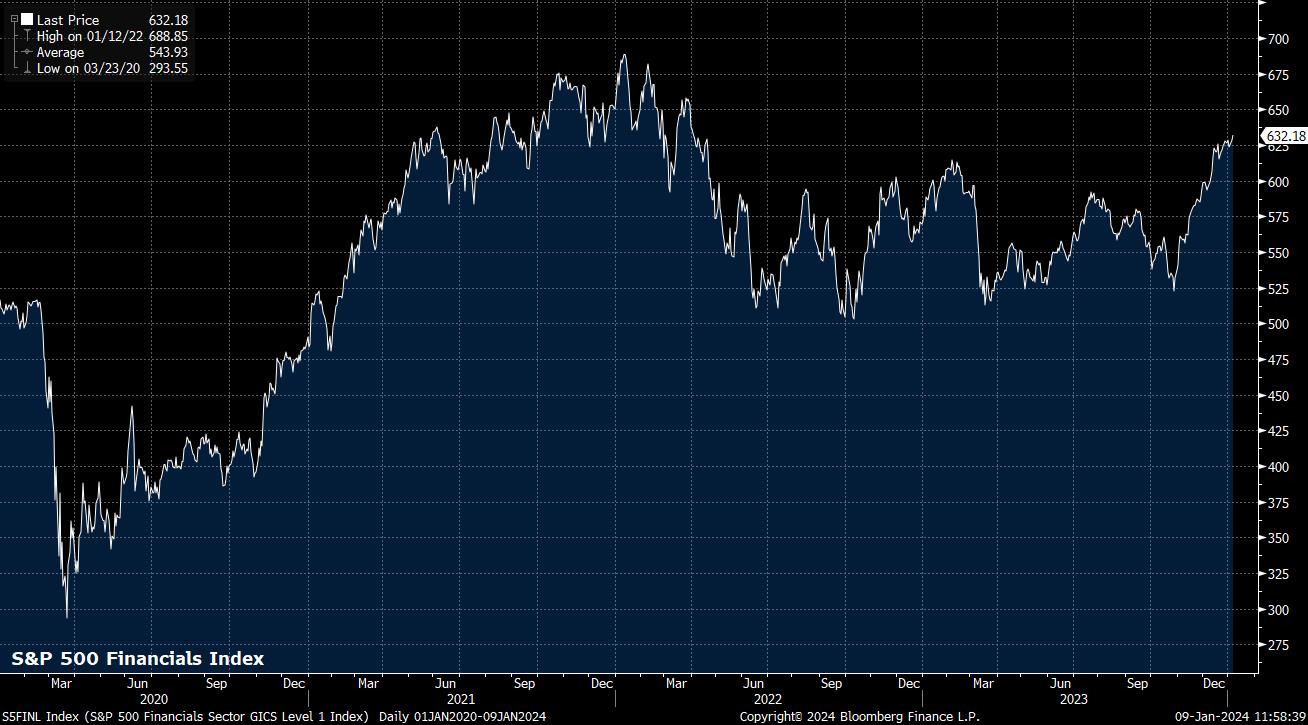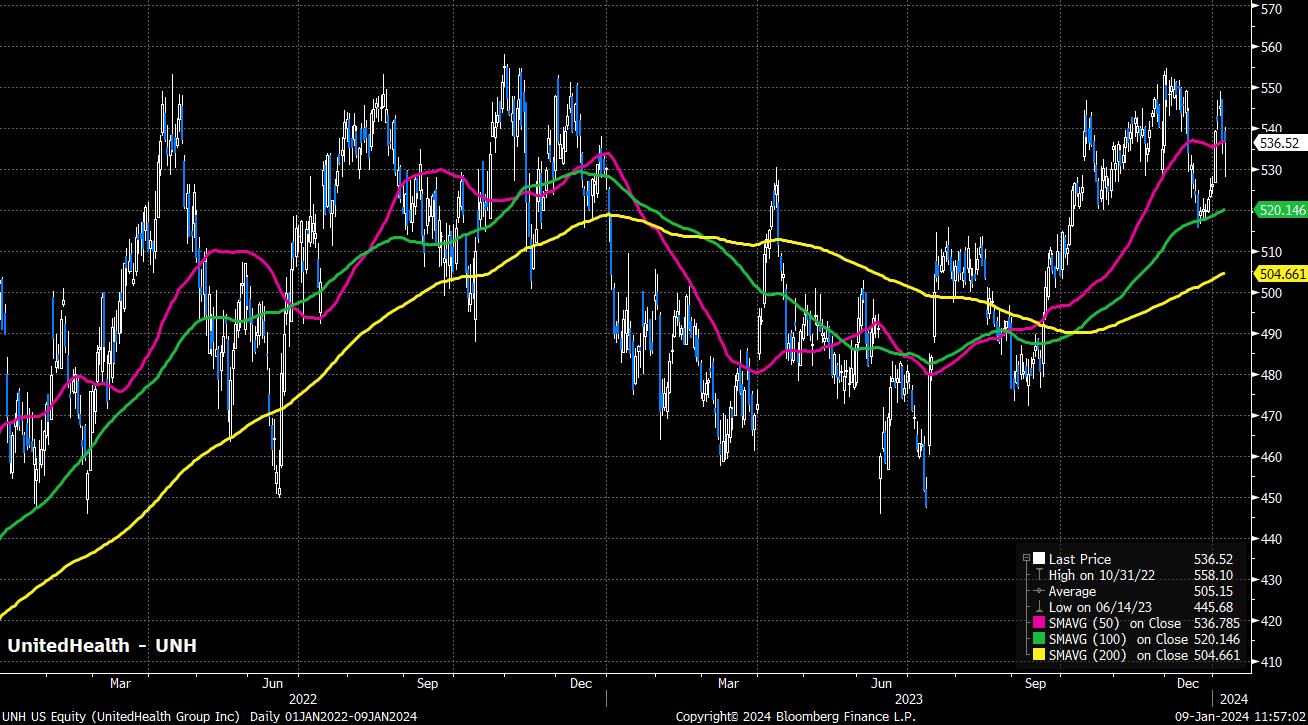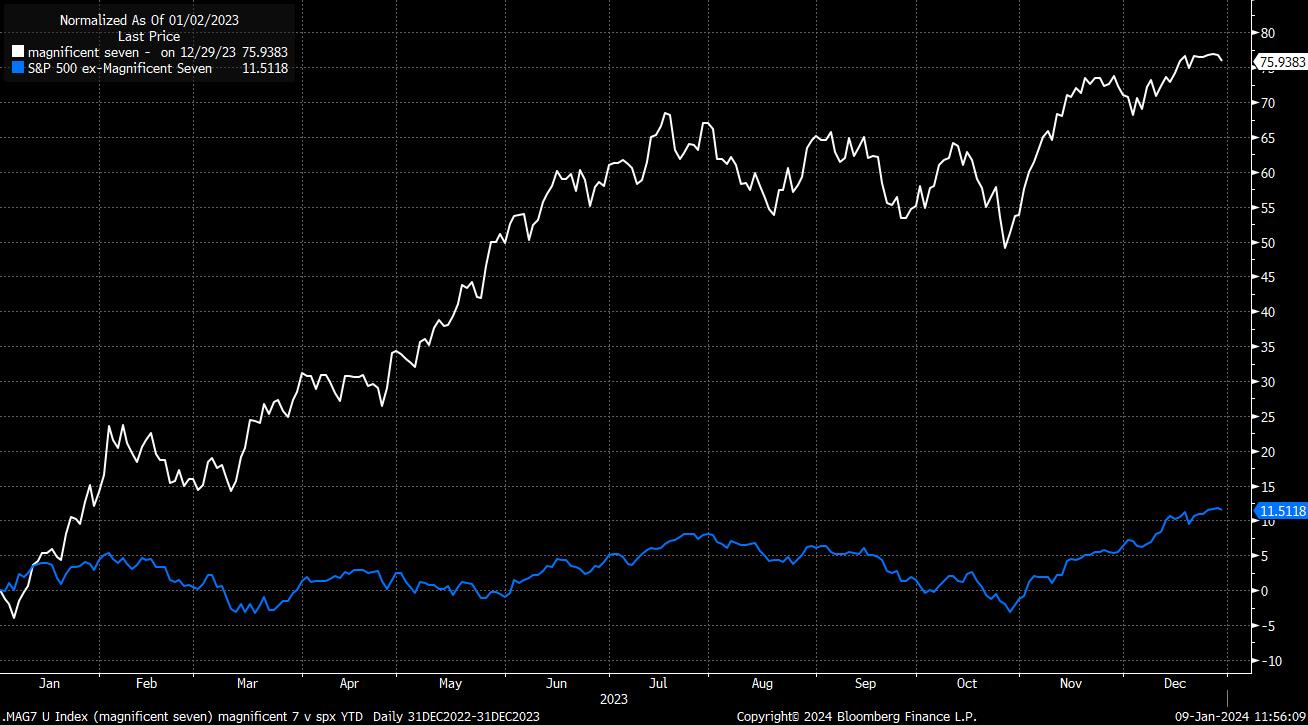差价合约(CFD)是复杂的工具,由于杠杆作用,存在快速亏损的高风险。81.1% 的散户投资者在于该提供商进行差价合约交易时账户亏损。 您应该考虑自己是否了解差价合约的原理,以及是否有承受资金损失的高风险的能力。
- 简体中文
- English
- 繁体中文
- Español
- Tiếng Việt
- ไทย
- Português
- لغة عربية
For earnings season overall, consensus sees YoY earnings growth of just over 1%, marking the second straight quarter of earnings growth – and firmly marking the end of the 2023 earnings recession – if delivered. Revenue, meanwhile, is seen rising around 3% YoY during the quarter, marking the 12th consecutive quarterly increase.
_spx_v_2024-01-09_11-59-19.jpg)
As mentioned, banks kick off earnings season this week, with BofA, Citi, JPMorgan and Wells Fargo reporting before the open, followed by Goldman Sachs and Morgan Stanley early next week.
There will be several areas under the microscope with bank earnings, besides top- and bottom-line figures. Credit quality will be of particular interest, as the lagged impacts of the Fed’s tightening cycle continue to be felt, even if the macro conversation has moved on to when, and by how much, the FOMC are likely to ease policy this year. The amount of such non-performing loans is set to have risen sharply in the fourth quarter which, coupled with the ongoing dealmaking slump, and one-time charges being taken due to FDIC fees related to the collapse of Silicon Valley Bank (and others) last year, poses a downside risk to earnings in the fourth quarter.
CEO commentary around the aforementioned tightening cycle will also be of particular interest, not only in terms of the outlook that is foreseen over the course of the year ahead, but also the degree of deposit flight (largely into money market funds) seen as a result of the 500bp of hikes that the Fed delivered, as well as how net interest margins (NIMs) are likely to evolve as and when the FOMC begin to ease policy.

The financials sector more broadly has experienced a relatively average last 12 months, with the S&P 500 financials index having gained just shy of 8% over that period. Unsurprisingly, given the regional banking blowup last March, the banks sub-index has fared marginally worse, with the KBW Bank Index having somewhat recovered from the intra-year lows, albeit having thus far failed to reclaim the highs seen just prior to the aforementioned issues becoming evident, and the Fed’s BTFP scheme being unveiled.
_Dail_2024-01-09_11-58-09.jpg)
Elsewhere in terms of earnings season, there are a few other stories worth watching. At broad level, Dow traders – owing to the price-weighted nature of the index – would be well-served by paying particular focus to earnings from UnitedHealth (UNH – 12th Jan), Goldman Sachs (GS – 16th Jan), Microsoft (MSFT – late-Jan), Home Depot (HD – late-Feb), and Amgen (AMGN – late-Jan), with those stocks being the top 5 weighted in the index, accounting for around a third of the index in total, with UNH alone holding a near-10% weight.

Of course, reports from the so-called ‘Magnificent Seven’ will also be in focus, not least owing to the remarkably strong performance exhibited by these stocks last year, and vastly outperformed the remaining 493 constituents in the S&P 500.

While many on the sell-side have been pointing to the likelihood that 2024 marks a year where value and small caps outperform, compared to their mega-cap counterparts, the opposite scenario appears more likely to pan out if, as most expect, economic momentum wanes as the year progresses.
Long Nasdaq/short Russell is a potential spread trade through which to express such a view, though earnings from the ‘big tech’ names aren’t due until late-January/early-February.

Related articles
此处提供的材料并未按照旨在促进投资研究独立性的法律要求准备,因此被视为市场沟通之用途。虽然在传播投资研究之前不受任何禁止交易的限制,但我们不会在将其提供给我们的客户之前寻求利用任何优势。
Pepperstone 并不表示此处提供的材料是准确、最新或完整的,因此不应依赖于此。该信息,无论是否来自第三方,都不应被视为推荐;或买卖要约;或征求购买或出售任何证券、金融产品或工具的要约;或参与任何特定的交易策略。它没有考虑读者的财务状况或投资目标。我们建议此内容的任何读者寻求自己的建议。未经 Pepperstone 批准,不得复制或重新分发此信息。。。


